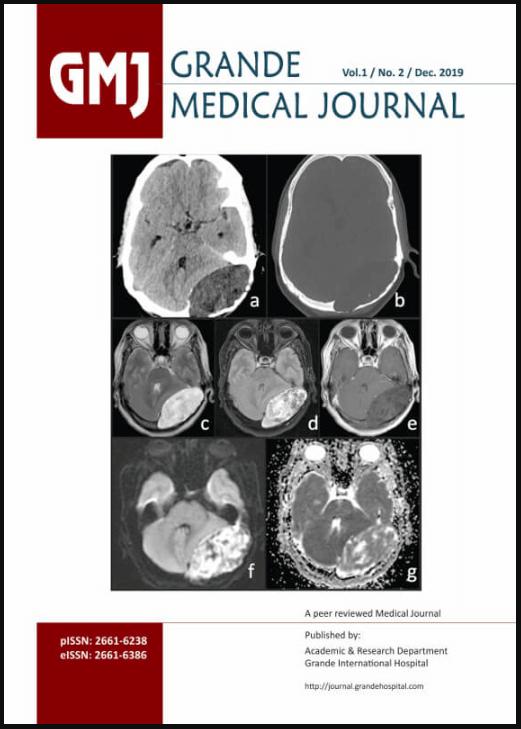Surgical outcome of intradural extramedullary spinal cord tumors - Our experience at a tertiary health care center
DOI:
https://doi.org/10.3126/gmj.v1i2.27091Keywords:
IDEM spinal tumors, Cauda Equina SyndromeAbstract
Introduction: To report the treatment results of 19 patients who underwent excision of intradural extramedullary (IDEM) spinal tumors.
Materials & Methods: This is a retrospective study. Patients’ records were retrieved from the electronic database of Grande International Hospital. There were 19 IDEM spinal tumors excised over a period of 6 years between January 2013 and August 2019 by a single surgeon. There were 11 (57.9%) males and 8 (42.1%) females with an average age of 48.37±21.87 years (range, 5-79 years). The mean postoperative follow-up period was 12.87±14.88 months (range, 15 days - 60 months). The histopathological findings, locations of the tumors, and clinical results were analyzed. Neurological findings were evaluated using ASIA grading system and pain was evaluated using VAS score.
Results: Histopathologically the tumors were: 8 meningioma (42.1%), 4 schwannoma (21.1%), 4 neurofibroma (21.1%), 1 dermoid cyst (5.3%), 1 lipoma (5.3%), and 1 myxopapillary ependymoma (5.3%). Tumor locations were: dorsal in 10 (52.6%), lumbar in 5 (26.3%), lumbosacral in 2 (10.5%), dorsolumbar in 1 (5.3%), and cervical in 1 (5.3%) patient. Neurologic status of 7 patients was normal and 12 had neurologic involvement with 3 patients having Cauda Equina Syndrome (CES) preoperatively. At the final follow-up, 3-grade, 2-grade and 1-grade improvement in ASIA score was observed in 1, 6 and 1 cases, respectively. There was no change in the ASIA grade in 1 case. All 3 cases of CES achieved full neural recovery. Preoperative VAS score was 9.21±1.08 and improved significantly to 0.74±1.62 after surgery. Neurological improvement was seen in 91.67% with complete recovery in 75% of the cases and not a single case deteriorated neurologically post-surgery.
Conclusion: Most intradural-extramedullary spinal cord tumors are mostly benign and good clinical results can be obtained when adequately treated with surgery.
Downloads
Downloads
Published
How to Cite
Issue
Section
License




